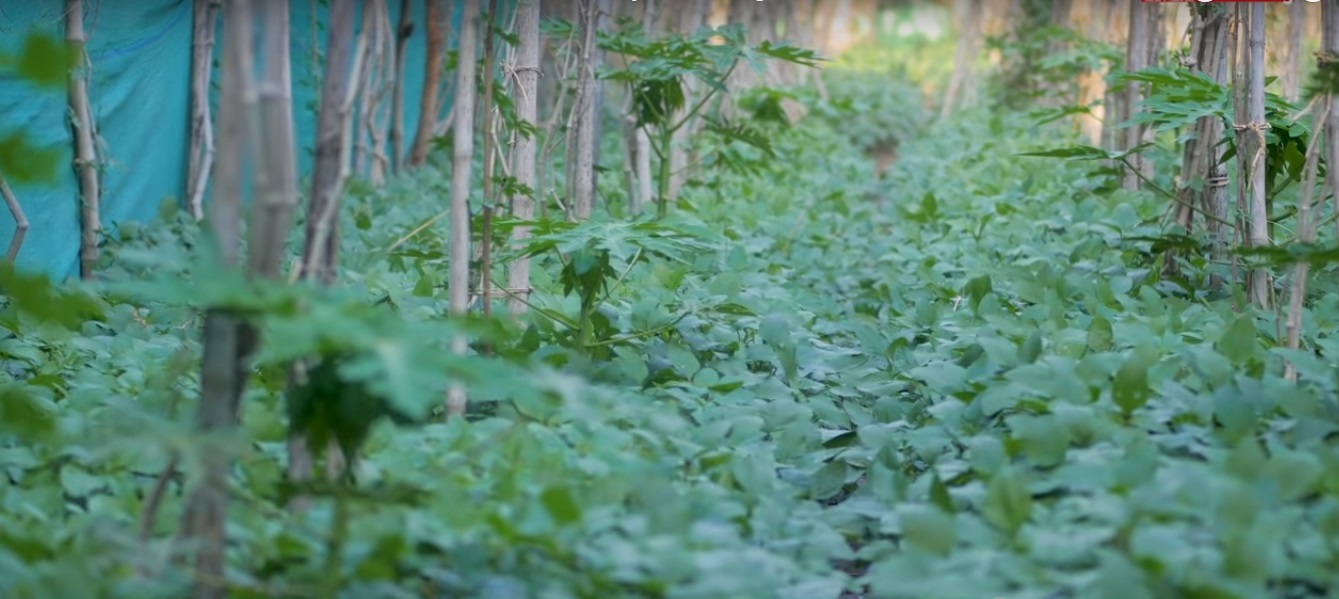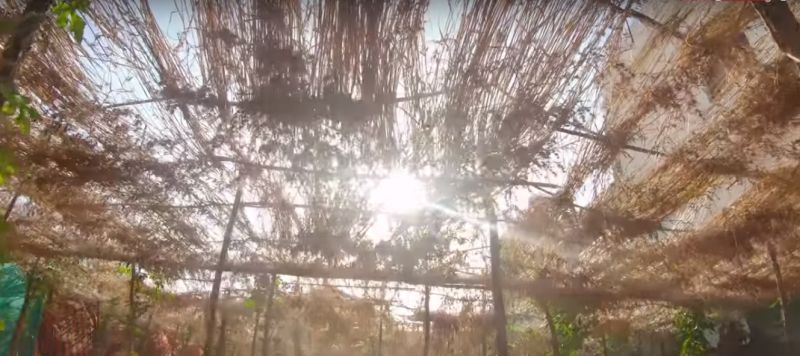
Nuksungla walling
Multilayer farming is a modern integrated farming system in which 4 to 5 different crops of different heights are cultivated in the same crop-field in a single season. The main objective is to be able to utilize a small plot of land (eg: backyard garden) and maximize its returns.
Benefits of multi layer farming:
- Income per unit area increase substantially with this system and ensures a more evenly distribution of income throughout the year from harvesting different crops in different season.
- Minimize risks of crop yield loss. This system enables a steady supply of farm products whole round the year.
- Helps to maximize land use. All growing space is used as crop fit together vertically (tall, medium & short), horizontally (all planting spots occupied) and underground (deep-rooted and shallow-rooted plants).
- Efficiently utilizes the soil moisture at different depths of soil and catch sunlight at different heights.
- Better and more consistent crop quality.
Steps involved in multi layer farming systems:

The type of crops used in multi layer farming system depends on the sequence of sowing, root zone and harvesting time of crops. In the beginning of the year, farmers can grow root crops such as ginger, turmeric and colocasia at a depth of 20-25 cm in the month of Jan-Feb. These root crops will take about 2 months to germinate above the soil and so in the mean time, short duration crops such as coriander, spinach, fenugreek and amaranthus can be sown on the surface layer of 5 cm depth. These top layer crops can be harvested in less than a month. During harvesting, these green leafy vegetables should be pulled out (uprooted) of the soil so as to loosen the soil and enhance aeration in the soil to promote germinability of the root crops.
As for the third crop, sweet potato is a good option as it can be grown in the middle layer of the soil (10 to 15 cm depth). It takes about a month to germinate and grow (which coincides with the harvesting period of the green leafy vegetables) and can be harvested after a period of 3-4 months (May to June). Farmers can additionally make pavilions using bamboo and straws to grow crops such as bitter gourd, cucumber, sponge gourd or snake gourd. These structures will act as partial shade for the bottom layer plants and also decrease transpiration loss of water.

Finally, farmers can grow papaya with a spacing of 12 x 8 feet. Care should be taken to see that heavy manuring should be done with FYM or vermicompost by the previous December.
Results:
Using this method of farming, farmers will be able to get returns throughout the year. By the month of March, crops like fenugreek, coriander, spinach and amaranthus will be ready for harvest. Sweet potato can be harvested by May-June. Climbers such as bitter gourd, cucumber, sponge gourd and snake gourd can be harvested throughout May to September and papayas will start bearing by the end of November. By the month of Jan – Feb, ginger and colocasia will also be ready for Harvest. So, basically, there is continuous supply of vegetables throughout the year.
Using this method, the cost of cultivation is much lower to traditional method of farming since there is natural shade and there is no need for much irrigation. Weed problem is also minimized since the ground is completely covered throughout the year.
Multilayer cropping system can also be practiced over large areas of land and with spices and fruit trees. Some alternative crops and methods which can successfully be employed under Nagaland conditions are as follows.
- Arecanut – Coffee – Black Pepper – Ginger
- Coconut – Banana – Pineapple
- Arecanut – Betelvine – Papaya – Ginger – Sweet potato
- Colacasia – Ladys finger – Amaranthus – Papaya
- Maize – Green gram – Groundnut
- Mango – Papaya - Pineapple





